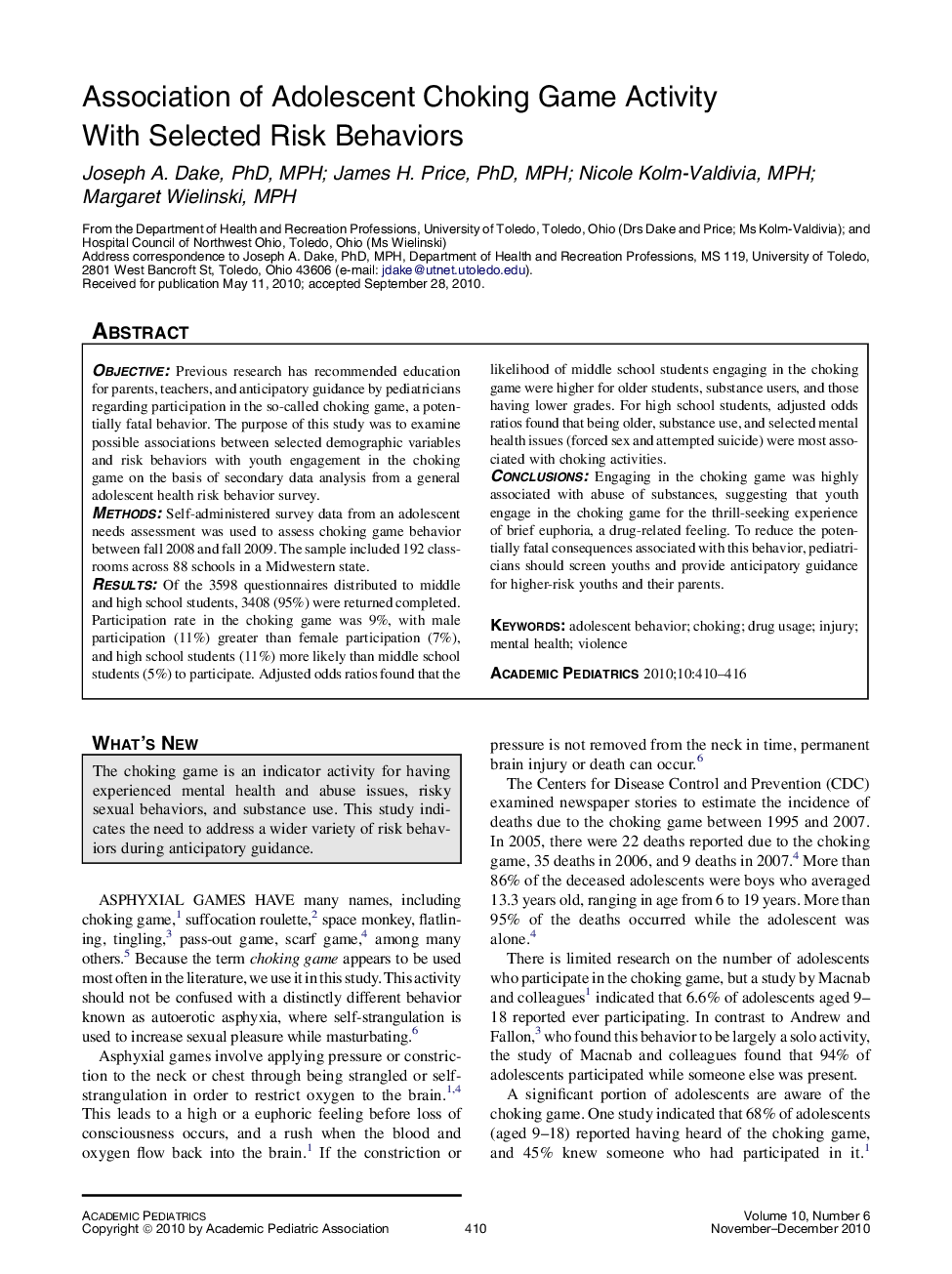| Article ID | Journal | Published Year | Pages | File Type |
|---|---|---|---|---|
| 4139968 | Academic Pediatrics | 2010 | 7 Pages |
ObjectivePrevious research has recommended education for parents, teachers, and anticipatory guidance by pediatricians regarding participation in the so-called choking game, a potentially fatal behavior. The purpose of this study was to examine possible associations between selected demographic variables and risk behaviors with youth engagement in the choking game on the basis of secondary data analysis from a general adolescent health risk behavior survey.MethodsSelf-administered survey data from an adolescent needs assessment was used to assess choking game behavior between fall 2008 and fall 2009. The sample included 192 classrooms across 88 schools in a Midwestern state.ResultsOf the 3598 questionnaires distributed to middle and high school students, 3408 (95%) were returned completed. Participation rate in the choking game was 9%, with male participation (11%) greater than female participation (7%), and high school students (11%) more likely than middle school students (5%) to participate. Adjusted odds ratios found that the likelihood of middle school students engaging in the choking game were higher for older students, substance users, and those having lower grades. For high school students, adjusted odds ratios found that being older, substance use, and selected mental health issues (forced sex and attempted suicide) were most associated with choking activities.ConclusionsEngaging in the choking game was highly associated with abuse of substances, suggesting that youth engage in the choking game for the thrill-seeking experience of brief euphoria, a drug-related feeling. To reduce the potentially fatal consequences associated with this behavior, pediatricians should screen youths and provide anticipatory guidance for higher-risk youths and their parents.
